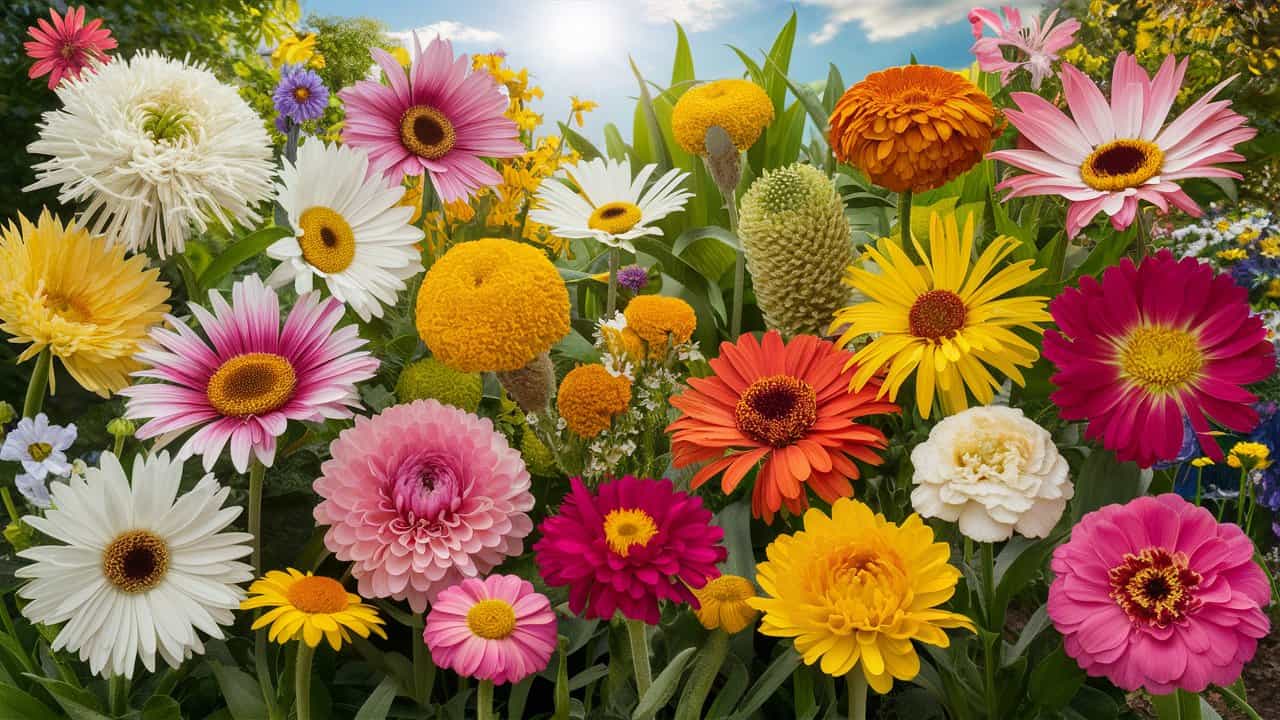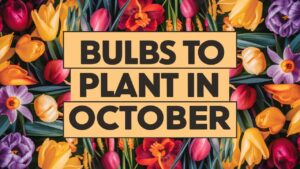In the vibrant world of flowers, there exists a captivating group that bears a striking resemblance to the beloved chrysanthemum, or “mum” as it is affectionately known. These flowers, with their delicate petals and striking displays, have the power to captivate and delight gardeners and nature enthusiasts alike. On this page, we’ll explore a wide assortment of flowers that share the mum’s alluring charm.
Perennial Flowers That Look Like Chrysanthemum
Shasta Daisy (Leucanthemum x superbum)
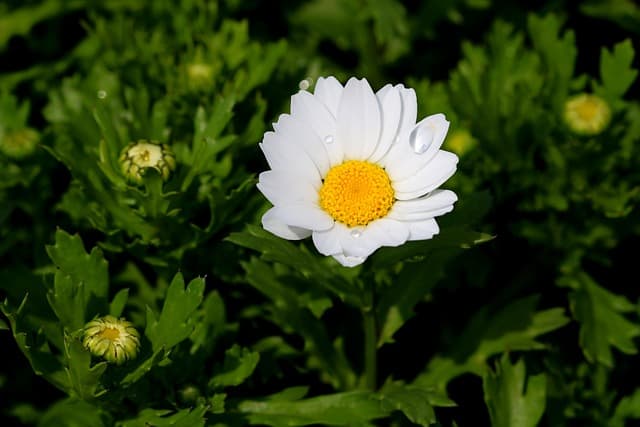
The Shasta daisy is a perennial flower that effortlessly mimics the appearance of the chrysanthemum. With its large, white, daisy-like blooms and bright yellow centers, the Shasta daisy is a true showstopper in any garden. Unlike its mum counterpart, the Shasta daisy boasts a longer bloom time, often gracing gardens from early summer to late fall. Its hardy nature and adaptability to a wide range of growing conditions make it a popular choice for gardeners seeking a low-maintenance, yet visually stunning, addition to their outdoor spaces.
Common Coreopsis (Coreopsis grandiflora)

Another member of the Asteraceae family, the Common Coreopsis, or Tickseed, is a vibrant perennial that bears a striking resemblance to the chrysanthemum. With its cheerful, daisy-like blooms in shades of yellow, orange, and red, the Coreopsis captivates the eye with its bold and beautiful display. Unlike the mum, the Coreopsis is known for its long-lasting flowers, often blooming from early summer to the first frost. Its adaptability to a variety of soil types and sun exposures makes it a versatile choice for gardeners seeking a low-maintenance, yet eye-catching, addition to their landscape.
Nippon Daisy (Nipponanthemum nipponicum)
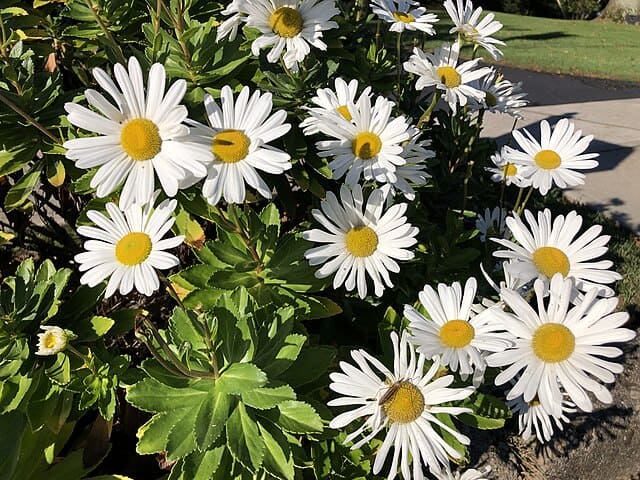
Hailing from Japan, the Nippon daisy, or Montauk daisy, is a perennial that shares the mum’s distinctive, button-like appearance. With its tightly clustered, white blooms and bright yellow centers, the Nippon daisy is a captivating sight to behold. Unlike the chrysanthemum, the Nippon daisy is known for its late-season bloom time, often gracing gardens with its presence from late summer to early fall. Its hardy nature and tolerance for a wide range of growing conditions make it a popular choice for gardeners seeking a unique and long-lasting addition to their outdoor spaces.
Annual Flowers That Look Like Chrysanthemum
African Daisy (Gazania rigens)
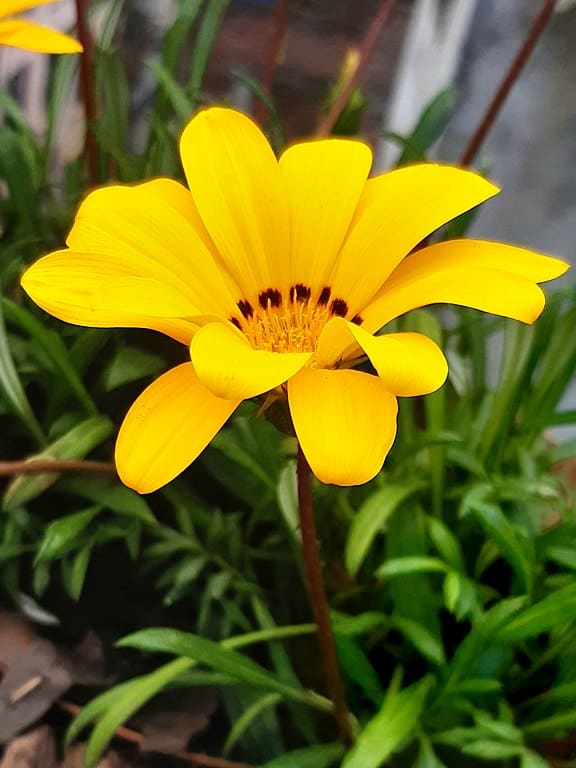
The African daisy is an annual flower that bears a striking resemblance to the beloved chrysanthemum. With its vibrant, daisy-like blooms in a wide array of colors, including yellow, orange, red, and white, the African daisy is a true showstopper in any garden. Unlike the perennial mum, the African daisy is known for its prolific and long-lasting blooms, often gracing gardens from early summer to the first frost. Its drought-tolerant nature and ability to thrive in full sun make it a popular choice for gardeners seeking a low-maintenance, yet visually stunning, annual addition to their outdoor spaces.
Chinese Aster (Callistephus chinensis)
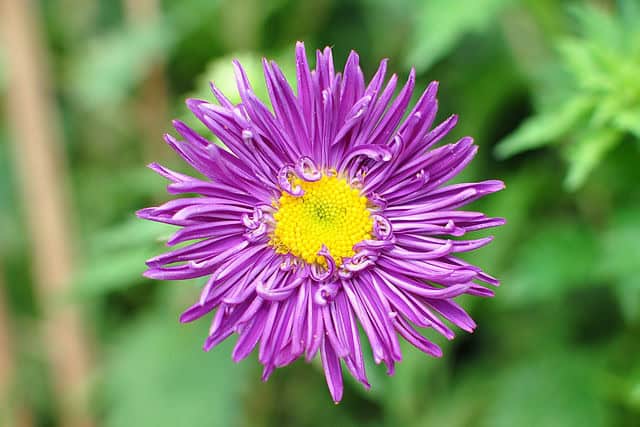
Another annual flower that shares the mum’s captivating charm is the Chinese aster. Belonging to the Asteraceae family, the Chinese aster boasts large, fluffy blooms that resemble the chrysanthemum’s distinctive appearance. With a wide range of color options, including pink, purple, red, and white, the Chinese aster is a versatile choice for gardeners seeking to add a touch of mum-like elegance to their gardens. Unlike the perennial mum, the Chinese aster is known for its quick growth and ability to bloom within the same growing season, making it a popular choice for those seeking an instant burst of color.
Marigold (Tagetes)
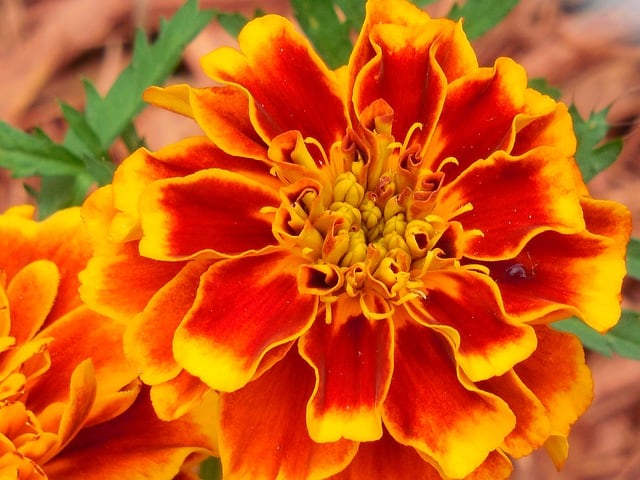
While not a direct member of the Asteraceae family, the marigold is another annual flower that shares the chrysanthemum’s captivating charm. With its vibrant, pom-pom-like blooms in shades of yellow, orange, and red, the marigold is a true standout in any garden. Unlike the mum, the marigold is known for its pungent, aromatic foliage, which can serve as a natural deterrent for pests and herbivores. Its easy-to-grow nature and ability to thrive in a variety of soil types and sun exposures make the marigold a popular choice for gardeners seeking a low-maintenance, yet visually striking, annual addition to their outdoor spaces.
Coneflower (Echinacea purpurea)

Further stepping away from the Asteraceae family, the coneflower, or Echinacea purpurea, is a perennial that shares the chrysanthemum’s distinctive, daisy-like appearance. With its large, vibrant blooms and prominent, cone-shaped centers, the coneflower captivates the eye with its unique and striking beauty. Unlike the mum, the coneflower is known for its medicinal properties, with its roots and leaves being used in various herbal remedies. Its hardy nature and ability to thrive in a wide range of growing conditions make the coneflower a popular choice for gardeners seeking a low-maintenance, yet visually stunning, addition to their outdoor spaces.
New England Aster (Symphyotrichum novae-angliae)
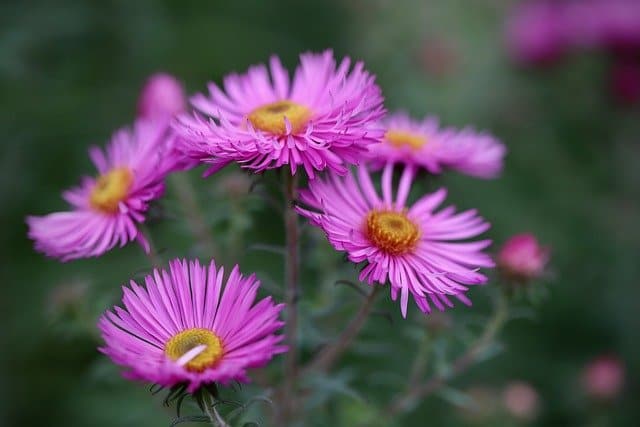
Another perennial that shares the chrysanthemum’s captivating charm is the New England aster. Belonging to the Asteraceae family, the New England aster boasts large, daisy-like blooms with delicate, ray-like petals and prominent, yellow centers. With a wide range of color options, including purple, pink, and white, the New England aster is a versatile choice for gardeners seeking to add a touch of mum-like elegance to their gardens. Unlike the traditional mum, the New England aster is known for its late-season bloom time, often gracing gardens with its presence from late summer to early fall, providing a vibrant and long-lasting display.
Pincushions (Scabiosa)

The pincushion flower, or Scabiosa, is a perennial that bears a striking resemblance to the chrysanthemum. With its unique, button-like blooms and delicate, pin-like petals, the pincushion flower captivates the eye with its whimsical and charming appearance. Unlike the mum, the pincushion flower is known for its long bloom time, often gracing gardens from early summer to the first frost. Its adaptability to a wide range of growing conditions and ability to attract pollinators make it a popular choice for gardeners seeking a unique and visually striking addition to their outdoor spaces.
Golden Marguerite (Anthemis tinctoria)
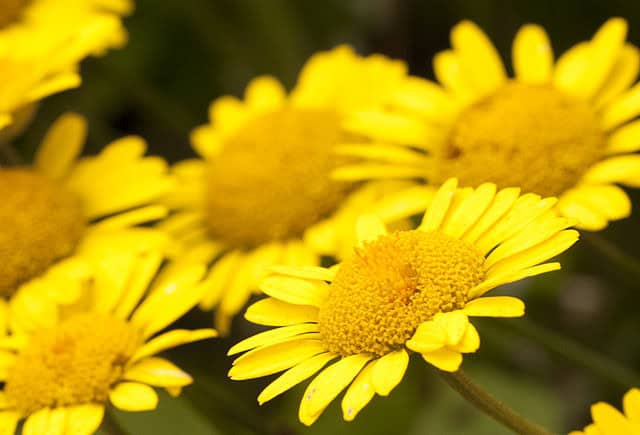
The Golden Marguerite is a perennial flower that bears a striking resemblance to the beloved chrysanthemum. With its vibrant, daisy-like blooms in shades of golden yellow and its finely-textured, fern-like foliage, the Golden Marguerite is a true standout in any garden. Unlike the traditional mum, the Golden Marguerite is known for its long bloom time, often gracing gardens from early summer to the first frost. Its adaptability to a wide range of growing conditions and its ability to thrive in poor soil make it a popular choice for gardeners seeking a low-maintenance, yet visually stunning, addition to their outdoor spaces.
Calendula (Calendula officinalis)
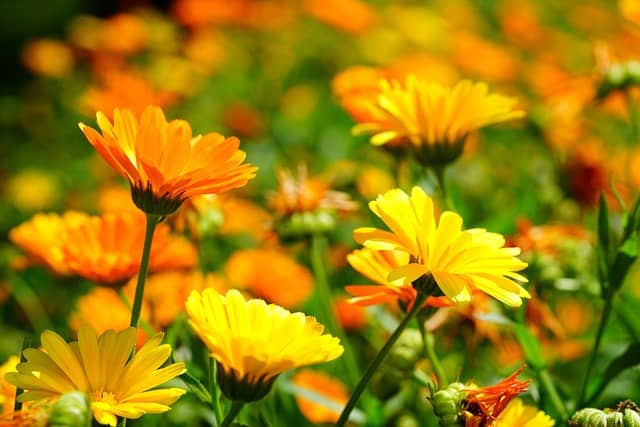
Also known as the “pot marigold,” the Calendula is an annual flower that shares the chrysanthemum’s captivating charm. With its vibrant, daisy-like blooms in shades of yellow, orange, and red, the Calendula is a true eye-catcher in any garden. Unlike the mum, the Calendula is known for its medicinal properties, with its petals and leaves being used in various herbal remedies. Its easy-to-grow nature and ability to self-seed make it a popular choice for gardeners seeking a low-maintenance, yet long-lasting, annual addition to their outdoor spaces.
Dahlia (Dahlia)
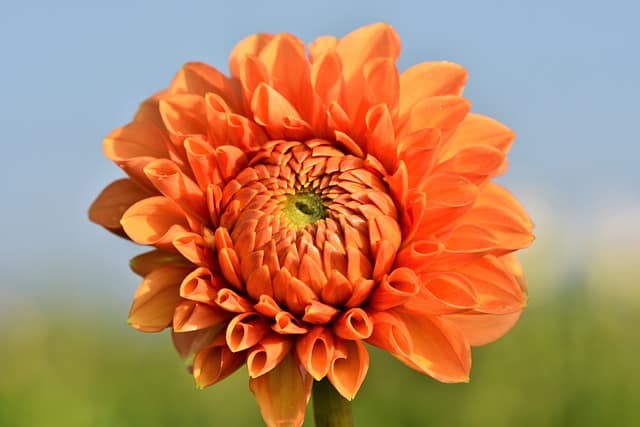
While not a direct member of the Asteraceae family, the Dahlia is a perennial that shares the chrysanthemum’s distinctive, pom-pom-like appearance. With its large, vibrant blooms in a wide array of colors, including pink, purple, red, and white, the Dahlia is a true showstopper in any garden. Unlike the traditional mum, the Dahlia is known for its tuber-based growth habit, which requires careful overwintering and replanting each spring. Its ability to thrive in full sun and its long bloom time make the Dahlia a popular choice for gardeners seeking a visually striking, yet high-maintenance, addition to their outdoor spaces.
Gerbera Daisy (Gerbera jamesonii)
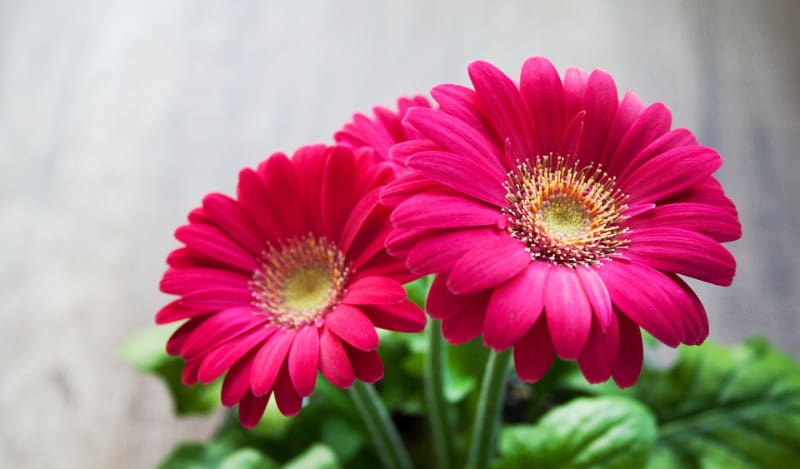
Part of the Asteraceae family, the Gerbera daisy is a perennial flower that shares the chrysanthemum’s captivating, daisy-like appearance. With its large, vibrant blooms in a wide array of colors, including pink, yellow, orange, and red, the Gerbera daisy is a true showstopper in any garden. Unlike the traditional mum, the Gerbera daisy is known for its long, sturdy stems and its ability to thrive in full sun. Its popularity as a cut flower and its ability to bloom throughout the growing season make it a favorite among gardeners and florists alike.
Carnation (Dianthus caryophyllus)

While not a direct member of the Asteraceae family, the carnation is a perennial flower that bears a striking resemblance to the chrysanthemum. With its fluffy, pom-pom-like blooms and its wide range of color options, including pink, red, white, and yellow, the carnation is a true charmer in any garden. Unlike the mum, the carnation is known for its spicy, clove-like fragrance and its ability to thrive in well-drained soil. Its long-lasting nature and its popularity as a cut flower make the carnation a versatile and sought-after addition to any outdoor space.
Zinnia (Zinnia)

An annual member of the Asteraceae family, the zinnia is a flower that shares the chrysanthemum’s captivating, daisy-like appearance. With its vibrant, pom-pom-like blooms in a wide array of colors, including red, orange, yellow, and pink, the zinnia is a true showstopper in any garden.
Zinnia is known for its easy-to-grow nature, its ability to self-seed, and its long bloom time, often gracing gardens from early summer to the first frost. Its adaptability to a wide range of growing conditions and its ability to attract pollinators make the zinnia a popular choice for gardeners seeking a low-maintenance, yet visually striking, annual addition to their outdoor spaces.
Conclusion
Each of these captivating blooms brings its own unique charm and personality, allowing gardeners to create stunning displays that mimic the beloved chrysanthemum. Whether you’re seeking a long-lasting perennial, a fragrant cut flower, or a self-seeding annual, these mum-like flowers are sure to delight and inspire. Explore these captivating options and discover the joy of adding a touch of chrysanthemum-inspired beauty to your garden.


